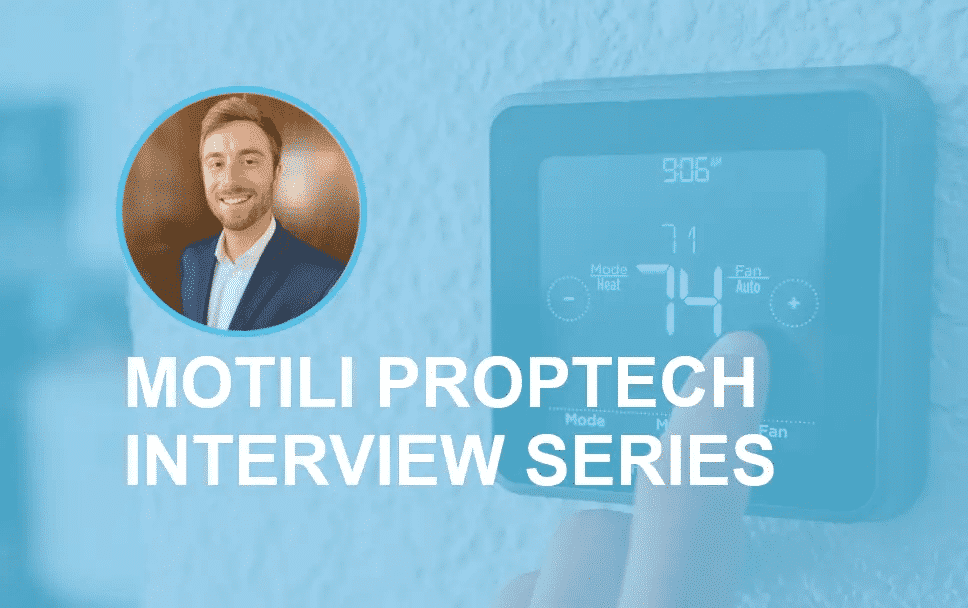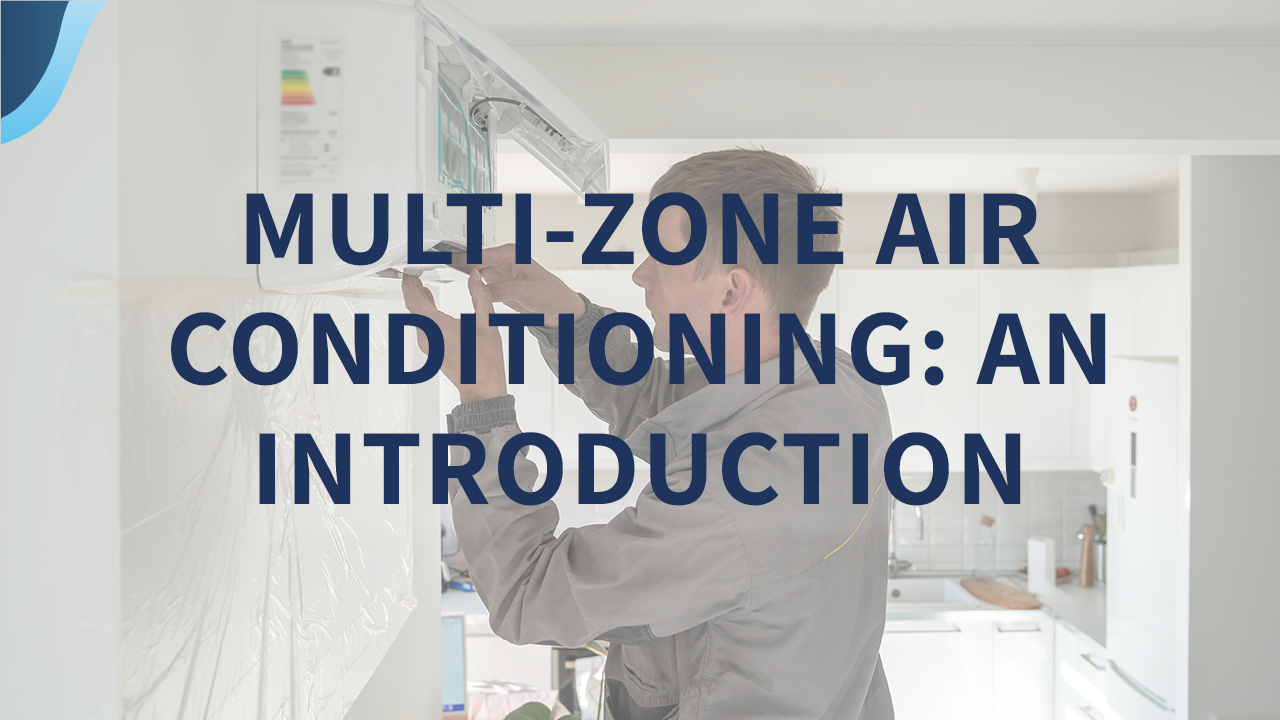In this PropTech interview, we speak to Jonathan Cramer who is a product manager at Clean Comfort.
Jonathan originally started his journey as an engineering intern five years ago. The last two years Jonathan has spent working with product marketing on the Clean Comfort® product line which focuses on Indoor Air Quality (IAQ) technology.
We pick Jonathan’s brain on what exactly is IAQ – a relevant and, perhaps, buzz word term that’s been getting a lot of attention this year especially.
Jonathan provides some timely and valuable insight for property owners and operators and the impact of IAQ on a number of important property management aspects.
In a recent IAQ training you mentioned three different air pollutant strategies. You talked about source control, ventilation, and filtration. Can you walk us through what those are and what the difference is between them?
Everything revolves around those three because they always exist together, it’s not an a la carte selection.
Source control is the management of pollutants at the source. While it may not be possible to completely eliminate pollutant sources, there are ways to significantly limit them or their impact on indoor air quality.
The second is ventilation. Outdoor air can dilute indoor air pollutants. That’s just as simple as back in the day, opening your windows and the doors to allow the fresh air in. Ventilation brings down the indoor air pollutants. You could do this in numerous ways: obviously opening the doors and running fans – but for most commercial applications we recommend using a technology ventilation product like HRV heat recovery ventilation, or ERV energy recovery ventilation.
Last, but not least, is filtration. I think a lot of people are already very familiar with filtration, because anyone with an HVAC system will have filters in our house. But filtration requires you to be running the system to get full filtration. You need to have air coming against that filter to allow it to really have a good filtration strategy.
Do you typically see a difference between how these IAQ strategies are implemented between single-family – whether it’s resident owned or rental properties, or multi-family properties, or commercial properties? And what works better where?
For a lot of homeowners, especially now with the situation that we are dealing with around the world, ventilation is becoming a little bit more of a hotter topic.
Before 2020 filtration was a more basic topic – air comes across filter, filter captures volatile organic compounds (VOC). It’s pretty basic, but allowing outdoor air in and making sure you keep an equilibrium between the two is important.
Schools, hospitals, and other commercial building types have typically maintained a really good ventilation aspect of bringing that outdoor air in. So technically if you’re going to look at it the two, I would say commercial buildings do a really good job of this aspect and we’re pushing it now to smaller scale, for residential homes.
How often do you feel HVAC filters need to be replaced? And do you feel like it’s done often enough at most residential communities?
It depends how often you run your systems. The reality is if you’re running your systems all the time, you’re going to have a lot more air coming across that filter, which means it’s going to have a lot more chances to be effective and also degrade faster. If you don’t run your system very often you will have a longer life on your filters.
Because of this I think it’s a situation by situation basis where you have to look at how often your systems are running and doing your own analysis.
There’s a lot of information out there around IAQ right now. It’s a very hot topic. What is one IAQ myth that you can dispel?
Let’s talk about Minimum Efficiency Reporting Value (MERV) ratings. A lot of time you see a number and generally speaking, as long as you’re not playing golf, the bigger the number the better. When it comes to the difference between a MERV 8 and MERV 13, you might assume that 13 is going to offer better filtration – but you need to consult your contractor.
Higher MERV ratings can cause damage to your system by adding unnecessary static pressure in your equipment.The contractor installing your unit is going to have the best knowledge on the subject and tell you what kind of system you should be running and what kind of MERV rating you should be using. Just because you have a MERV 13 doesn’t necessarily mean that it’s the perfect filter for you. No home is exactly the same, no environment is exactly the same. The MERV rating that’s best for you is going to vary case by case.
What are some IAQ tech trends that you’re seeing pop up this year and what do you see taking off in 2021?
IAQ has seen a tremendous boost this year. I can speak for our products – we’re up 139% in Purification sales versus where we were last year. I think there are a lot of good conversations around indoor air and it has to do with people simply being at home much more.
In 2021 I believe we’re going to see a lot more technologies that allow us to monitor IAQ. We’re seeing a lot of comments around filtration efficiency and humidity monitoring. For example, if you’re noticing humidity outside of the 40% to 60% relative range that the ASHRAE recommends it may be time to look at humidification or dehumidification to regulate the moisture in the air.
My take is that the focus in 2021 will turn to IAQ efficiency monitoring and optimization. We have all these great technologies and all these tools, but now we need to look at how they can be utilized better and more efficiently, and improved based on use case.
In a previous interview we spoke with smart building consultant, Vincent Dermody, who talked about properties and buildings as one centralized ecosystem, a combination of properties with a central data processing unit to monitor and optimize building systems, security, etc… Do you see sensors and remote monitoring and use for IAQ? And how does that fit into the smart building ecosystem in your perspective?
I agree with that perspective. Just like you have your lighting systems, smart outlets, smart thermostats, and other internet of things (IoT) applications – all of it is tied to this complex ecosystem, which often isn’t processing data in one place or communicating well.
There’s no reason why in the future we wouldn’t include humidifiers and other IAQ applications in this ecosystem. I can see a system where your devices are self-monitoring, self-diagnosing and can alert a contractor before there is a problem – and let you know you need to set up an appointment. This can have enormous impact on resident satisfaction where frequently it takes a dive when building systems break down suddenly at the worst possible time. In the future, I believe technology will easily overcome this, and that future is not far away.
What is one thing that you feel every property management executive should know right now, but doesn’t about indoor air quality?
The biggest advice I can give to building owners, operators and property managers is – you need to have an IAQ strategy in place for your properties. Through proactive and preventative maintenance you must figure out what condition your building systems, especially HVAC is, and you need to set up a plan to manage this.
Every property is different, so a blanket approach to managing HVAC and IAQ just isn’t going to work in many cases where you are dealing with a large property portfolio across different regions. In the north, you need humidifiers; in the south, you need dehumidifiers.
Proper planning can produce energy and cost savings and improve resident and tenant satisfaction.
Where would you recommend to start if someone was looking for more information on indoor air quality and wanted to get more educated on this topic?
ASHRAE has a lot of technical documents available. For consumers I’m also going to promote my product line, we have a lot of resources on IAQ. If you visit our website we have consumer brochures that are geared towards homeowners. We can really dig into the advantages of using certain product lines. For example: purification – we explain what it does, how it helps you, and how it can increase your comfort.
A lot of times you get these cool fancy tools and you don’t really know exactly what they do. We offer a lot of bite-size content that makes some of the more complicated topics easier to understand. When people think of IAQ, I think the misconception is that you have to be a scientist or you have to understand what HVAC in itself is and I don’t think that’s necessarily true. We offer content in a way that should be easy for anyone to understand, regardless of background.












